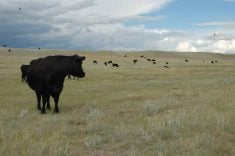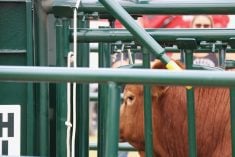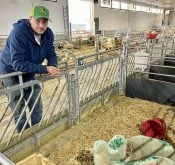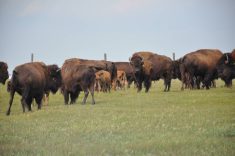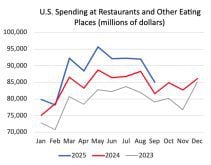INNISFAIL, Alta. – Black calves mean black gold for some Alberta Charolais breeders.
Although white Charolais are still the norm, breeders are trying to breed all shades of the palette from white to red and sometimes black.
Breeding for color in a traditionally white color scheme is tricky.
“Nobody knows what you’re going to get. You can breed two white Charolais and get a red one. You can breed two red ones and get a real white one,” said Tena Wagers.
She and her husband Lorne have the second black Charolais born in Canada. When their female was born, they pored over name books to find an appropriate name for her pedigree. They came up with LLW Miss Aberdeen 47F.
Read Also
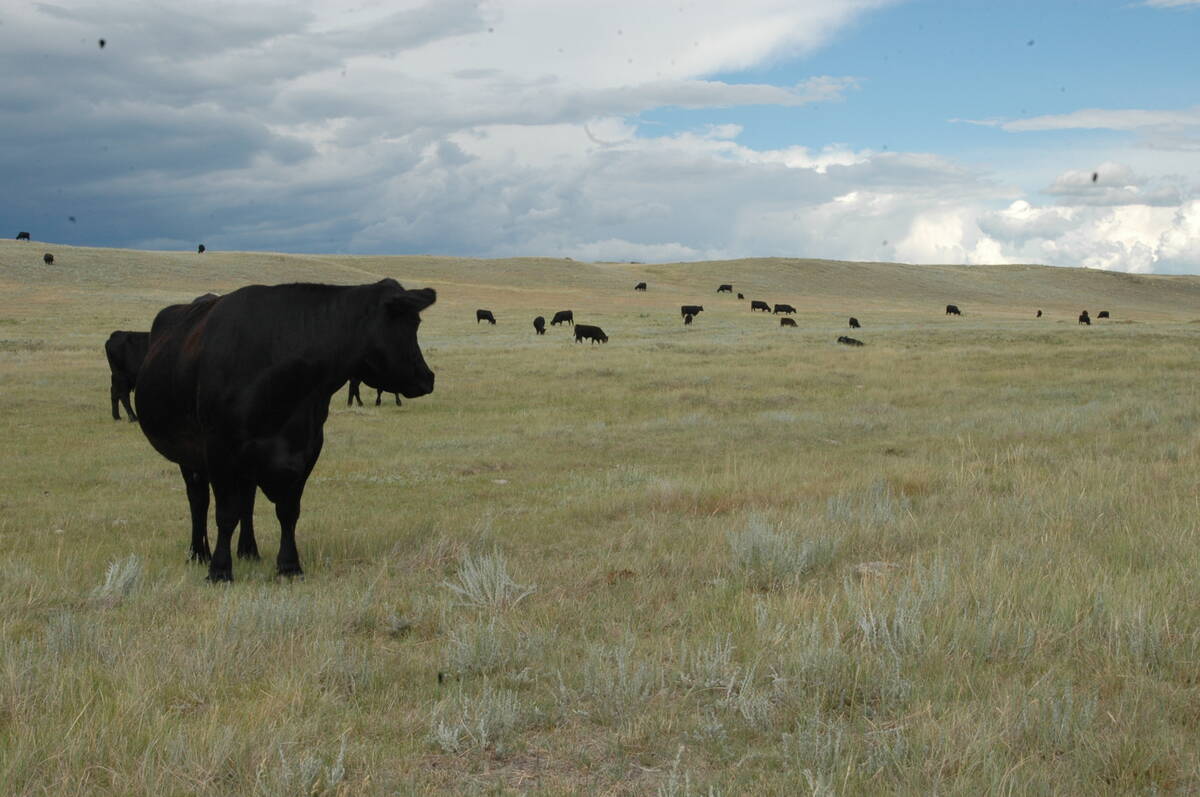
Canadian Food Inspection Agency slammed for handling of bovine tuberculosis case
The federal government leans heavily on producers to “take one for the team” and risk their livelihoods without any reassurance of support.
They also own, in partnership, a black yearling bull named After Hours.
Adding color to a traditionally ivory-colored breed happened partly by chance and partly by design, as red factor Charolais started appearing in show rings more than 20 years ago.
Some breeders thought introducing red to the great white breed was sacrilegious. Others said “go for it.”
The red factor is a little-understood genetic anomaly that appears at random. However, more breeders are learning to look for pigmentation and a wider range of hair color to produce calves ranging from buckskin to cherry red.
In their travels, Lorne and Tena saw Charolais with grey pigmentation. They were interested in experimenting with color and thought these grey pigmented bulls were the way to go.
“It makes sense to get the black, you have to go with the dark pigment,” said Tena.
It’s also partly economics for Wagers at their Double L Charolais at Innisfail where they raise 110 breeding cows. The family has been in the business for 32 years. They’ve kept red animals for a number of years because some of their commercial customers like a tan-colored bull that adds frame to their calves and holds the darker color.
“We have a really good market here for tan bull calves,” said Tena.
The real market is in the United States where black cattle are popular. A number of breeds are attempting to produce black cattle, including traditionally red and white Limousin, Simmental and Maine Anjous.
“If we start selling black bulls for $5,000 American, it’s worth our while to have a few black females,” said Lorne.
However, the black Charolais won’t suit everyone. In the U.S., black or very dark red Charolais are prohibited from the show ring, according to a recent ruling by the association.
After Hours and Miss Aberdeen are completely black except for lighter colored rings around their noses. The female has pink spots on her udder and the bull has pink coloration on his testicles.
They have black hoofs, black around the eyes, rectum and mouth and they possess physical characteristics typical to a Charolais. They have verified parentage through blood tests and DNA typing.
Wagers keep their black Charolais separate from their traditional herd and won’t mix black and white.
They got six eggs from Miss Aberdeen as a heifer last year and think she will flush well again this year. They have a dark red bull calf from Miss Aberdeen and they think as he matures, he will darken.
After Hours will be used as the sire to see if they can get more black calves.
They showed Miss Aberdeen in major Charolais shows where she not only turned heads but placed first and second in her classes. She has also won some reserve championships. She is now owned in partnership with other breeders.
“She’s shown with all the whites and beaten them,” said Tena.
Canada’s first documented black Charolais came from Peter Jochimsen of Wildwood, Alta., who unexpectedly got a heifer calf he named Black Beauty in 1993. She went through numerous tests to see if she was a Charolais and passed them all. The second black female came from Wagers at Innisfail. Black Beauty is the mother of After Hours.



